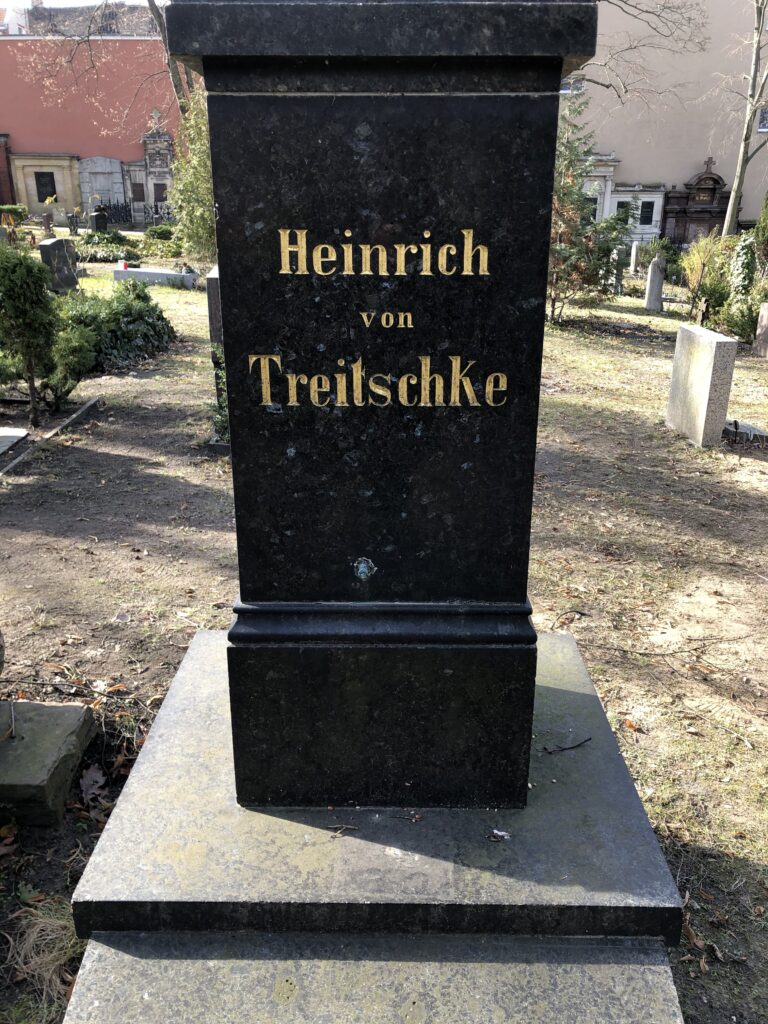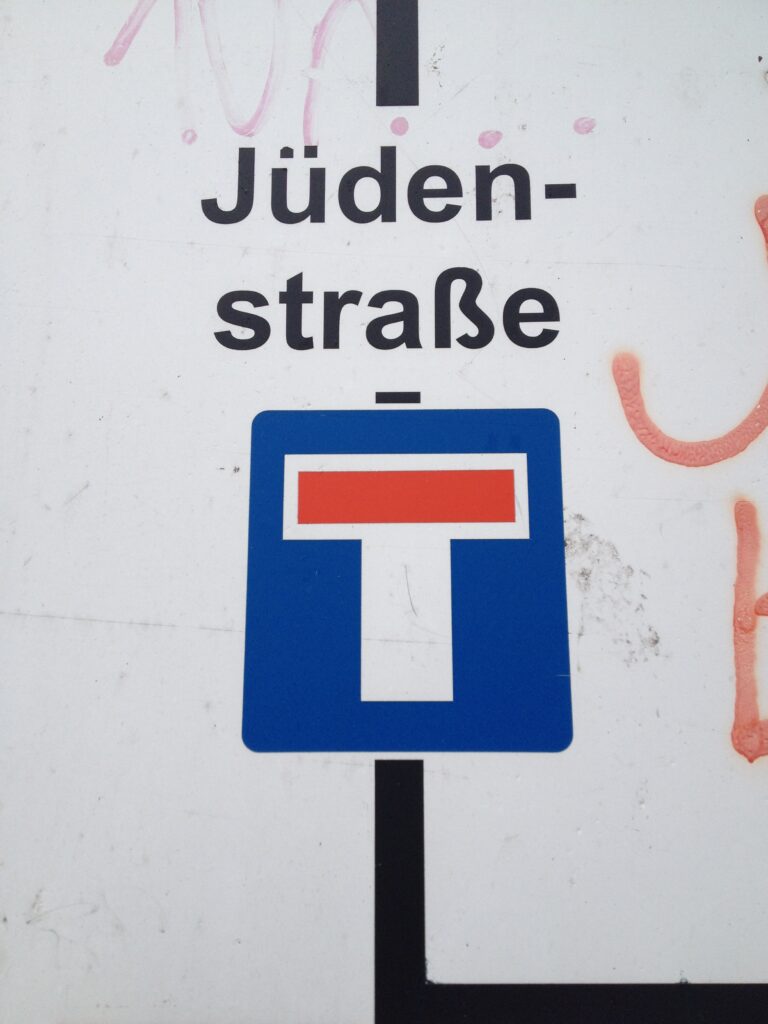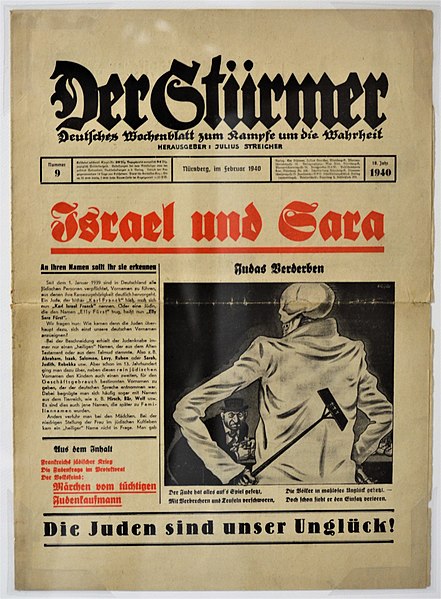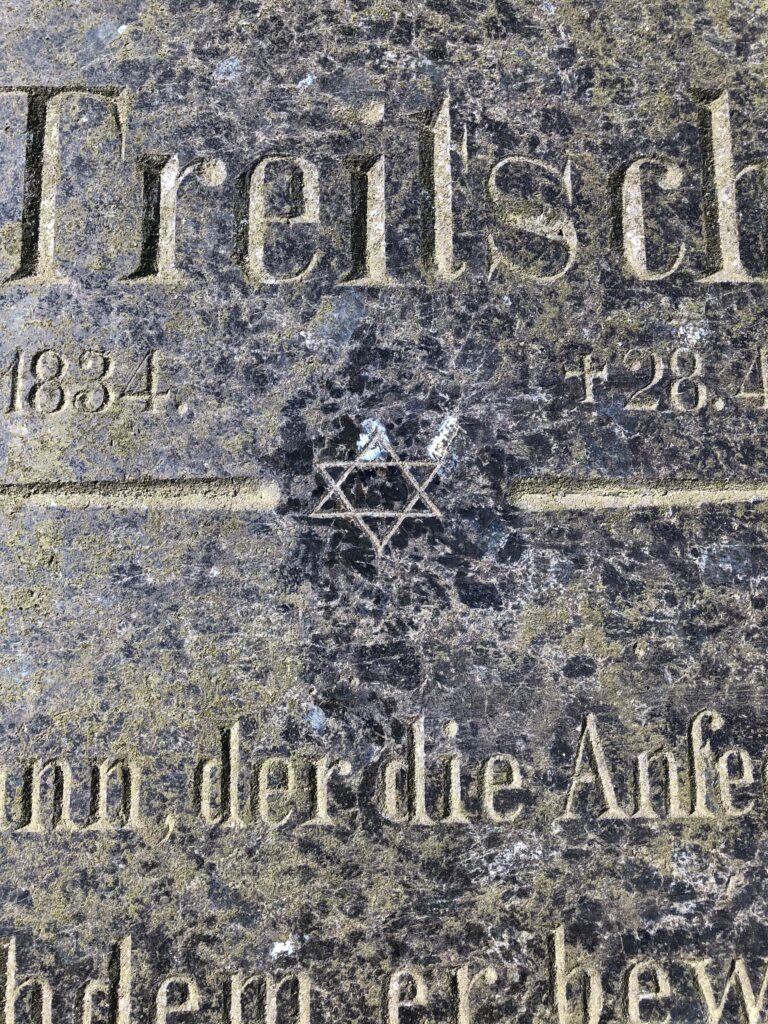
Anti-Semitism has a very long pedigree. Often, when one reads about gravestones being damaged in this context, it is Jewish headstones that have been targeted. This story is different.
The relationship with its Jewish community will forever be part of Berlin’s story. It is on the whole, a very ugly story, everywhere.
Today, Berlin’s monuments, exhibitions and study centres to this history are rather admirable. Here and there around the city are also reminders, tiny pin pricks of light in that deep, 12-year darkness as Hitler’s capital, that hint too at ‘what if?’ or ‘if only.’
The removal of reminders of uncomfortable history is an ongoing and contentious debate globally. Retrospective re-evaluations of the past often seem ignorant, lacking and lazy. The genuine relic, however uncomfortable the story it represents, cements authenticity and becomes a core around which discussion, fact and understanding can be built today.
Berlin has tussled with this debate, perhaps more intensely than other cities.
A Berlin metro station name came up for review recently. The station’s name – Möhrenstrs – or ‘Moor Street’ was the issue. No longer acceptable said some in today’s Berlin. This story has drifted from the front pages now, after a few new name proposals foundered. But if you missed the story here it is.
Berlin street names have been changed more often than most cities. Imperial period names morphed into Nazi. Then after World War II, both east and west Berlin relaunched with their own labels, and now there are some new modern ones too. It is a terrible irony that one of the longest lasting street names is Jüdenstrs, Jews Street, now both a testament and an accusation, and still signposted in the Berlin medieval period city centre area today.

One street name controversy that has rumbled for years, and seems pretty simple to resolve but hasn’t been, is Heinrich von Treitschke Straße. My daughter’s school was on this road.
He was an individual with unpleasant ideas, who lived in a time when many already knew better. Treitschke was quoted by the Nazi regime – if fact his quote appeared as a slogan on a newspaper front page every week, then available in all good Nazi newsagents near you – from 1923 until February 1945.

The name of the repulsive paper was the ‘Der Stürmer’, the content a slop of violent anti-Semitism and brutal adolescent pornography . The phrase was at the bottom of the front page was: ‘The Jews are our misfortune’
Violent antisemitism and brutal, emotionally adolescent violent pornographic fantasy sums up the Nietzschean ‘mass man’ that characterised many a the Nazi follower cum perpetrator. Godless, lawless, boorish, basic, childish, savage and completely unable to see their own degradation.
This should be born in mind when pondering today Hitler’s seemingly inexplicable appeal. The cheering masses in the beer halls, Hitler’s audience, where these folks.
Even the more erudite audience members experienced something peculiar. The German population, traumatised by the end of WWI and the myriad disasters of the 1920s, sought succour increasingly desperately, and in increasingly fringe places.
That is why Hitler was so effective. Millions of Germans abandoned the rational, the fair, and the logical and responded with a leap of faith to the emotional and self-interested, wallowing in dreams of revenge and the ecstatic vision of Hitler’s ‘quick fix’ redemption offer.
All you had to do was believe. Hitler’s speeches weren’t interesting, they were moving.
In this type of atmosphere emotive slogans and images wield power.
Hence the effectiveness of the phrase ‘the Jews are our misfortune’
Treitschke was a product of the main streams of German consciousness of the mid 1800s. As a member of parliament in the Reichstag he represented German nationalist parties and views. He was a contributor to a world into which Hitler was born. Treitschke is also quoted thus: ‘Brave peoples expand, inferior peoples perish’. This could easily have come from the Führer himself.
Where did these come from? Post French Revolution democratic fervour had spilled over into Germany by the mid 19thcentury. Industrialisation had produced a new, educated middle class that wanted representation. The workers and farmers too felt ripped off. The ruling aristocratic castes were afraid.
This catalysed debates about a new German democracy, nationalism, and imperial ambitions, often underpinned by crude notions of social Darwinism. Unfortunately, at this time, German Jewish emancipation was up for debate (again). There was also the sudden realisation that modern industrial economies and stock markets could fail. It was a new world in which some German Jews, brave and innovative, excelled. It’s failures demanded scapegoats.
These sentiments, combined eventually with broad feelings of national self-pity, jealousy (v. Treitschke was vocally anti British empire) and stupidity, contributed to the slide into World War I.
v. Treitschke died in 1896, not seeing that that he had in part inspired (the question of whether he would have been moved by Hitler’s speeches is moot as he was deaf).
He was buried in the St Matthews cemetery in Berlin, a resting place of more illustrious dead, perhaps these men are the most significant. Treitschke was a well-known figure, and his grave is substantial, made up of a costly, black-green granite head stone and flat grave-cover slab.

But today, if you look closely at this grave, you see now see something peculiar.
On the flat gravestone, under his name and dates, there are two carved scrolls. These remains untouched, and might have originally flanked a central symbol, perhaps an Iron Cross.
But at some point, probably in the 1980s, this part of the slab was ground down by persons unknown, mechanically, leaving the central section smooth and shiny. And then, with power tools, a neat star of David has been cut into the space. It’s deep and carefully executed. Only the left-hand angles seem a bit ‘off’. This hints that this person was perhaps not a professional, was determined (it’s cut into granite) and perhaps was working hurriedly as one would expect if one had lugged power tools, and a power source into a cemetery to amend a grave.
Who did this is remains a mystery. Why is pretty obvious. It looks like the ‘amendment’ will stay there as long as the grave. A strange victory.
